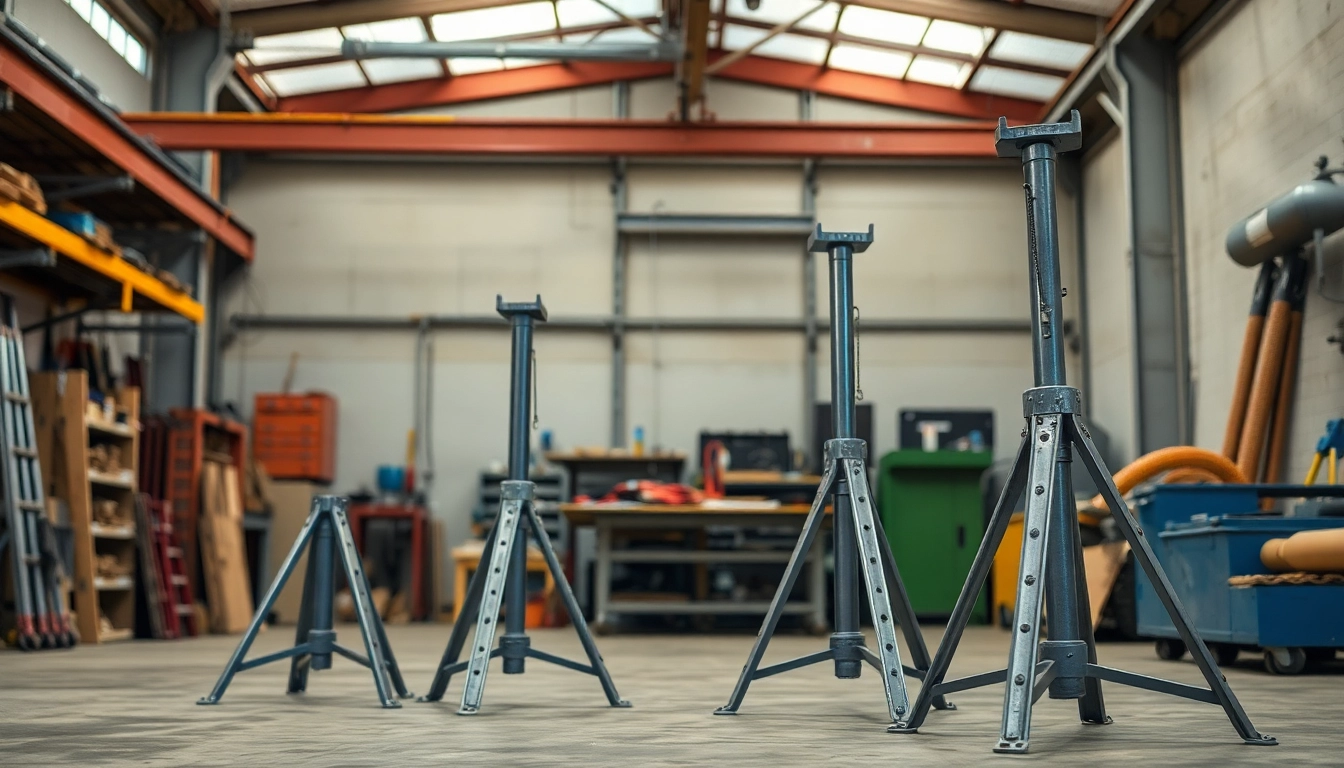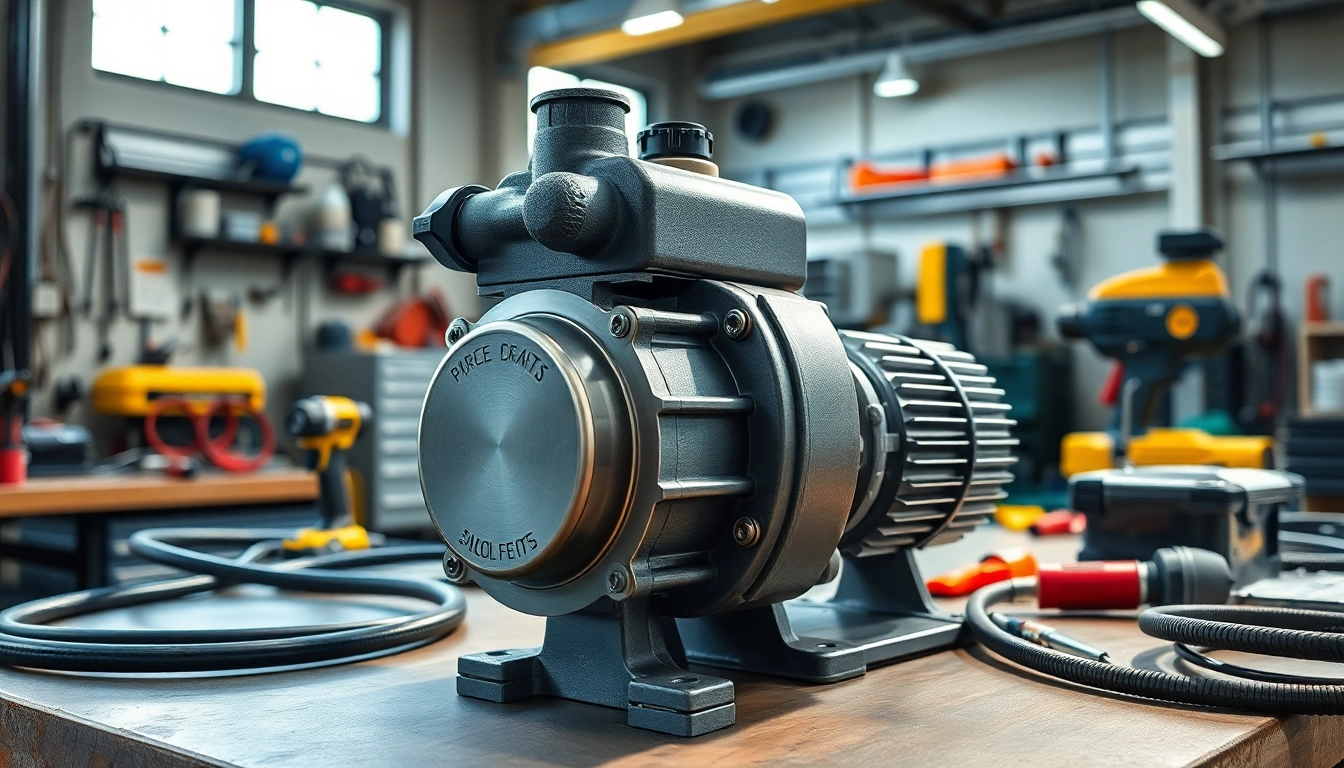Introduction to Pipe Stands
In the world of construction and engineering, the importance of pipe stands cannot be overstated. These essential tools not only facilitate the handling of heavy pipes but also enhance safety and efficiency on various job sites. As more industries turn to pipe stands for support during installation processes, understanding their benefits, types, and application methods becomes critical. This article delves into the intricacies of pipe stands, offering valuable insights for professionals and DIY enthusiasts alike.
What Are Pipe Stands?
Pipe stands are mechanical devices used to support pipes in a vertical or horizontal position during various operations, such as welding, assembly, or maintenance. Constructed from durable materials like steel or aluminum, they come in a variety of designs to accommodate different pipe sizes and weights. The primary purpose of these stands is to secure pipes and hold them at a specific height or angle, allowing for easier processing and manipulation.
Importance of Pipe Stands in Welding and Construction
In welding and construction, the use of pipe stands is paramount for several reasons:
- Safety: By providing stable support for pipes, stands significantly reduce the risks of accidents and injuries caused by falling or unstable materials.
- Efficiency: Pipe stands facilitate quick positioning and alignment of pipes, minimizing downtime and enhancing overall productivity on job sites.
- Precision: They allow for accurate welding and assembly angles, ensuring high-quality results in pipework installations.
- Versatility: Different designs cater to a range of applications, from heavy industrial tasks to smaller, precision-oriented projects.
Types of Pipe Stands Available
Understanding the variety of pipe stands available on the market can aid in selecting the best option for specific needs:
- V-Head Pipe Stands: These feature a V-shaped head to cradle pipes securely, allowing for safe welding or cutting.
- Roller Head Pipe Stands: Ideal for moving pipes into position, these stands include roller heads that facilitate easier pipe alignment.
- Adjustable Pipe Stands: These can be resized to accommodate a range of pipe diameters and heights, making them versatile for various applications.
- Fixed Height Stands: Designed for specific pipe sizes, these stands are simpler but provide reliable support for uneven surfaces.
Choosing the Right Pipe Stands
Factors to Consider When Selecting Pipe Stands
Selecting the right pipe stand is critical to ensure safety and effectiveness on the job site. Here are several factors to consider:
- Load Capacity: Ensure the stand can support the weight of the pipe, factoring in any additional loads during the welding or cutting process.
- Height Adjustability: Consider whether adjustable models are necessary for your projects, especially when working with different pipe sizes and orientations.
- Material: Opt for heavy-duty materials that can withstand harsh working conditions, balancing weight against portability.
- Stability Features: Look for stands with wide bases or stability features to prevent tipping during use.
- Ease of Use: Choose stands that are easy to set up and adjust, ideally with built-in leveling mechanisms.
Comparing Pipe Stands Features and Benefits
When comparing various pipe stands, take into account their key features and how these translate into benefits:
- V-Head Style: Provides a secure setting for cylindrical pipes, aiding in accurate welding.
- Height Adjustability: Essential for accommodating various projects and pipe heights without needing additional equipment.
- Portability: Some stands include wheels or a foldable design, which enhances transportability across job sites.
- Durability: Look for corrosion-resistant finishes for extended lifespan, particularly in outdoor or adverse conditions.
Top Brands and Products in the Market
Several reputable brands have established their mark in the pipe stands market, providing various options to consumers. Some of the top brands include:
- Sumner: Known for its sturdy, adjustable stands suitable for heavy-duty applications.
- Ridgid: Offers a range of pipe stands that combine portability with durability.
- VEVOR: Provides budget-friendly options while maintaining functionality in weld support.
- WeldingMart: Features specialized stands designed for specific welding tasks.
How to Use Pipe Stands Effectively
Step-by-Step Guide to Setting Up Pipe Stands
Setting up pipe stands correctly is crucial for safety and efficiency:
- Identify the site and the specific requirements of your project.
- Position the stands at a calculated distance apart based on the pipe length.
- Adjust the height of each stand to ensure the pipe will sit level without any slope.
- Securely place the pipe into the V-head or other designated areas on the stands.
- Double-check that the stands are stable and the pipe is secure before commencing any work.
Safety Tips for Working with Pipe Stands
As with any heavy-duty equipment, safety is paramount. Here are some key safety tips:
- Always wear appropriate personal protective equipment (PPE) such as helmets and gloves.
- Ensure the area around the stands is clear of obstructions to prevent accidents.
- Never exceed the load capacity of the stands, as this can lead to failure and injury.
- Regularly inspect the stands for wear and damage before and after use.
Common Mistakes to Avoid When Using Pipe Stands
Avoiding common pitfalls can increase the lifespan of your pipe stands and ensure safe operation:
- Not adjusting the height correctly can lead to improper angles during welding.
- Overloading stands may cause them to buckle, leading to damage or accidents.
- Neglecting regular maintenance and checks can result in unexpected failures.
- Using stands on uneven surfaces without stabilization can lead to tipping.
Maintenance and Care for Pipe Stands
Cleaning and Storing Your Pipe Stands
Proper maintenance ensures longevity and optimal performance. Follow these cleaning and storing tips:
- Rinse off dirt and debris from the stands after each use with a mild detergent and water.
- Dry thoroughly to prevent rust or degradation of materials.
- Store stands in a dry, secure place, preferably in an upright or hung position to avoid bending.
Inspecting Pipe Stands for Longevity
Regular inspections are essential to maintain operational integrity:
- Check for any visible signs of wear, such as cracks or bent components.
- Examine the locking mechanisms and adjustability features for smooth operation.
- Ensure all parts are securely tightened before use.
Repairing Common Issues with Pipe Stands
If your pipe stands develop issues, timely repairs can extend their life:
- Loose screws or bolts can generally be tightened with a basic toolkit.
- Cracked or damaged parts might require welding or replacement from the manufacturer.
- For rusted stands, sand off the affected areas and apply appropriate rust-proofing paint.
The Future of Pipe Stands in Industrial Applications
Emerging Technologies and Innovations in Pipe Stands
The pipe stands industry is evolving with technological advancements that enhance functionality:
- Smart stands equipped with weight sensors that alert users when pipes are close to surpassed load capacities.
- Adoption of lightweight materials, including composites that maintain strength while being easy to transport.
- Modular designs that allow for customizable configurations based on specific project needs.
Customer Trends and Demands in Pipe Stand Usage
As industries evolve, so do customer expectations:
- Increased demand for environmentally friendly materials and practices.
- Preference for products that offer enhanced safety features and prevent accidents.
- Growing interest in cost-effective solutions that do not compromise on quality or performance.
Final Thoughts on Investing in Quality Pipe Stands
Investing in high-quality pipe stands is vital for ensuring safety and efficiency on job sites. As the industry continues to progress, keeping up with innovations and customer demands will be key to maximizing the benefits of these indispensable tools. By selecting the right types, maintaining them properly, and leveraging emerging technologies, professionals can enhance their performance, safety, and productivity in pipeline work.


